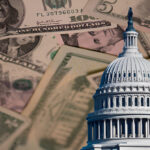As the Federal Reserve gears up for its latest policy meeting, Americans are left wondering: When will interest rates finally come down? The answer lies hidden in a complex web of economic data that Fed Chair Jerome Powell and his team are meticulously analyzing. Let’s dive into the key factors shaping our economy and influencing the Fed’s decisions.

The Million-Dollar Question: Rate Cuts on the Horizon?
While the Fed is unlikely to cut rates this week, market watchers are eyeing September for potential action. The CME FedWatch tool suggests an 90% chance of a quarter-point rate cut to 5%-5.25% at the next meeting. But as always, it all comes down to the data.
Employment: A Balancing Act
The job market has been resilient despite higher interest rates, but signs of cooling are emerging:
- June saw 206,000 new jobs added
- However, April and May job gains were revised down by 111,000
- Recent months have fallen below the 10-year median of 243,000 new jobs
The upcoming July jobs report will provide crucial insights into this trend.
GDP: Unexpected Growth Spurt
Contrary to fears of a slowdown, the US economy showed surprising strength in Q2:
- GDP grew at a 2.8% annualized rate
- Total economic output reached $22.9 trillion
This robust growth might give the Fed pause before considering rate cuts.
Inflation: The Fed’s Primary Target
Bringing inflation down to 2% remains the Fed’s top priority:
- June’s inflation rate dropped to 3%, down from 3.3% in May
- While a significant improvement, it’s still above the Fed’s 2% target
- The next inflation reading on August 14 will be closely watched
Consumer Spending: America’s Economic Engine
As consumers drive 70% of the US economy, their spending habits are crucial:
- June retail sales held steady at $704.3 billion
- May’s retail sales were revised up to a 0.3% increase, matching the 10-year average
This resilience in consumer spending supports economic growth but may delay rate cuts.
Gas Prices: A Welcome Reprieve
Lower gas prices are offering some relief to American wallets:
- Regular gas is 20 cents cheaper than in late April
- This drop has helped keep overall inflation in check
- Lower fuel costs could boost consumer sentiment and spending
Consumer Confidence: A Mixed Bag
The University of Michigan’s consumer sentiment index reveals:
- A recent dip in May, with little change in June
- Continued concerns about high prices, especially among lower-income Americans
Improving consumer confidence could be key to sustaining economic growth.
Housing Market: Feeling the Squeeze
Higher mortgage rates are reshaping the real estate landscape:
- 30-year fixed rates have dipped to 6.8%, but remain well above the 10-year median of 3.95%
- A $400,000 mortgage now costs $915 more per month than it did at 3% rates
- Existing home sales hit 3.89 million in June, near record lows since rate hikes began
- Despite fewer sales, home prices continue to climb due to limited inventory
What’s Next for the Fed?
As Powell and his team pore over these economic indicators, their decision will hinge on balancing several factors:
- Inflation trajectory
- Employment trends
- Consumer spending patterns
- Overall economic growth
While the strong GDP growth and resilient job market might argue against immediate rate cuts, the Fed must also consider the lagged effects of previous rate hikes and the potential risks of keeping rates too high for too long.
For now, Americans should stay tuned. The Fed’s decisions in the coming months will play a crucial role in shaping our economic future, from the cost of mortgages and car loans to the overall health of the job market.
As we navigate these economic waters, one thing is clear: in the world of central banking, data reigns supreme. And in the words of Fed Chair Powell himself, we’ll need to see “more good data” before any major policy shifts occur.







